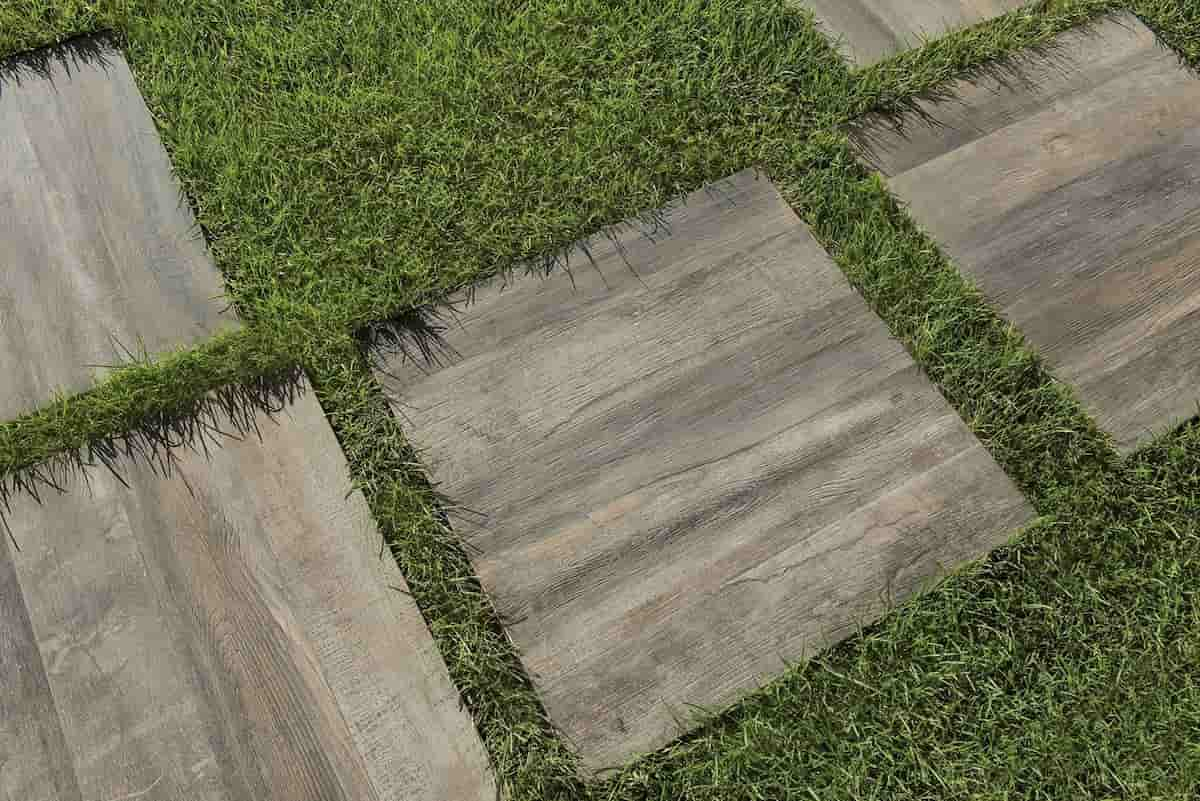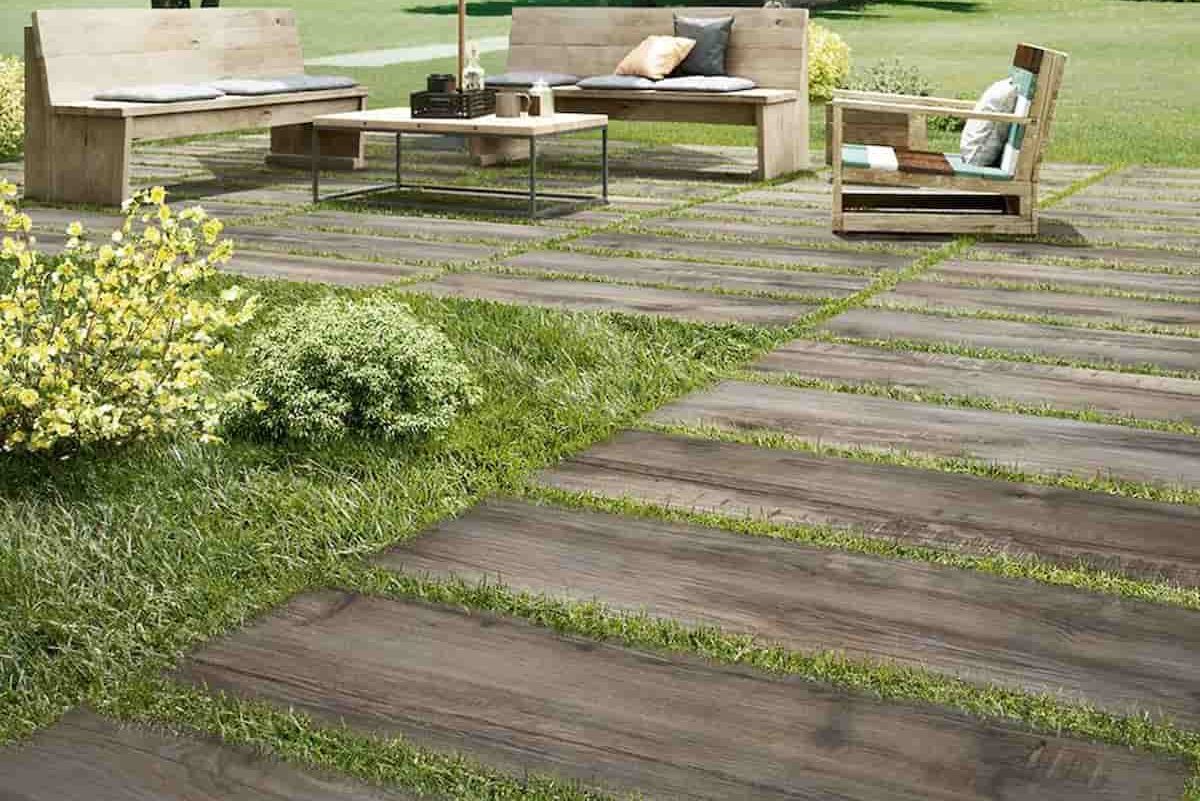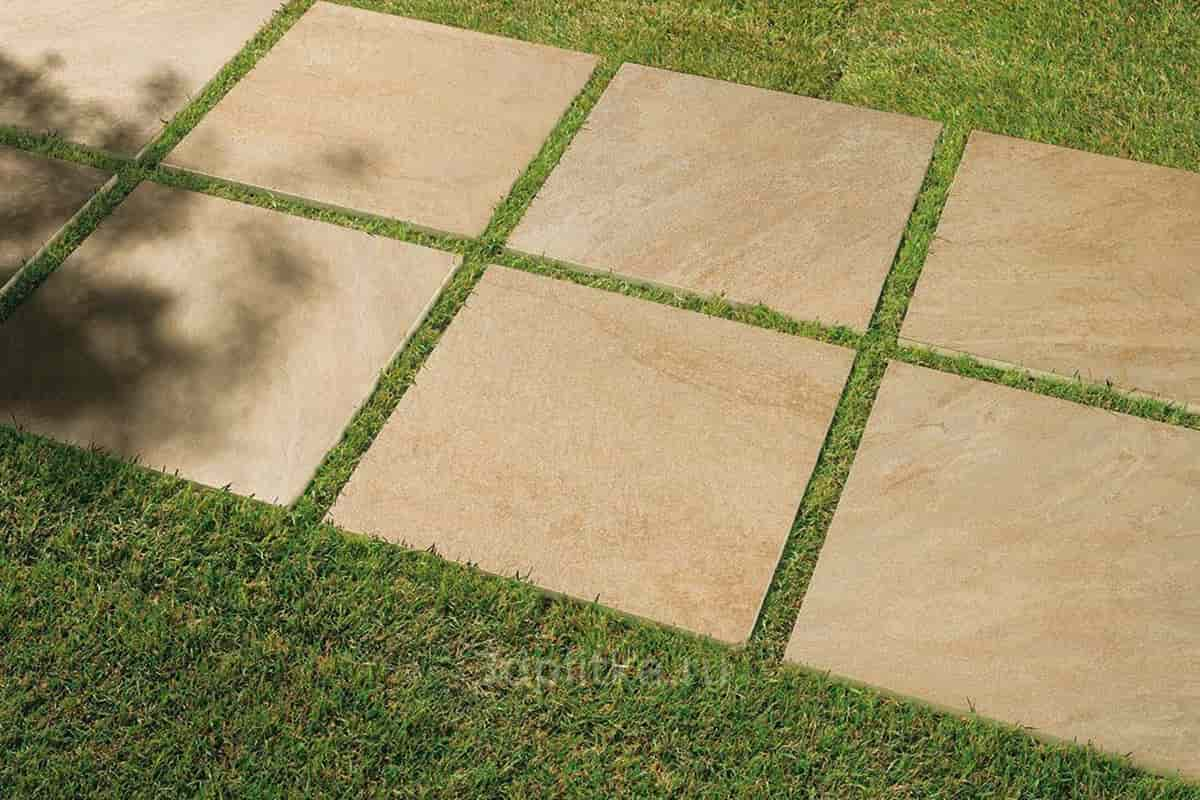Gain a thorough understanding of laying porcelain tiles in this helpful guide. We will next go on to details about laying them on grass.
Then you may rest assured that we have given you enough information to create a yard that is both stunning and distinctive.
Porcelain can be laid on the grass in a short amount of time. It’s also quite simple to relocate it wherever you choose. Consequently, it provides the greatest possible adaptability, which is essential for making a wide variety of forms.
It’s possible to conduct the installation on your own, without the cost or hassle of hiring a professional dry fit installer.
Wherever there is grass, the slabs can be air-dried there instead of using adhesives. The pavement can be replaced whenever you like.
The good news is that the same material can be used multiple times. What’s more, you won’t have to wait around for a couple of days before you can relish the fruits of your labor. The slabs are ready for walking on as soon as they are laid.

Which tiles work best when laid dry on grass?
Bigger porcelain tiles are typically used for the dry lay method. You don’t have to use grout or mortar when installing this flooring. Since this is the case, they can be set up in a wide variety of settings.
And because of how simple they are to set up, they can be used by anyone, regardless of how much landscaping knowledge they have.
Furthermore, once the pressure is gone, these porcelain floor tiles will remain firmly attached to the surface.
The porcelain veneers will remain fixed in place once you are done installing them because to the extra weight.
This is especially tricky with lighter porcelain tiles, which need to be pressed down during installation so that they are just below the surface in order to be securely bonded.
How does a damp installation differ from a dry one?
When most people think of stone patios, they envision a wet installation. The procedure’s end result is an aesthetically pleasing and robust structure with tight mortar joints and no rough patches.

If you’re going for a more modern or traditional look and feel, this is the way to go. However, dry installation can provide a more rustic, homey atmosphere and an organic appearance.
The longevity of your wet coat depends on how carefully you plan and implement it. Because it is permanently implanted, its longevity is another major benefit.
You may find that your budget takes a hit, though, from the first outlay. If you already have a concrete slab, this is the method to use for laying tiles.
However, if you want to add some new and exciting design options to your landscaping project, dry installation is the way to go.
This approach does not call for a mortar joint between the tiles or a concrete base. As a result, both the price and amount of time spent working will decrease significantly.
The fact that this method can impart permanent rustic beauty into your room just adds to its overall allure. In addition, it provides design versatility, letting you create exactly what you had in mind.
Dry-laying porcelain lawns lets you be more inventive when designing an outside space for weekend barbecues or a one-of-a-kind walk in your gorgeous garden.
If you have any questions about the installation process, our team is here to help. If you’re looking for guidance on how to install porcelain landscape tiles, we’re delighted to supply you with details on grout for porcelain tiles, external porcelain mortar, and other relevant products.

When compared to regular ceramics, what distinguishes porcelain?
A common misconception is that porcelain is superior to ceramic. Understanding the intended application is crucial before making any purchases. Now, however, let’s take a closer look at the distinction:
Longevity – Porcelain and pottery are both manufactured by firing clay and other organic materials in an oven.
Although these items share some commonalities, their longevity can vary depending on the manufacturing process used.
China’s porcelain is made from the world’s finest and purest clay. Porcelain is fired at a higher temperature and pressure in a kiln. Porcelain undergoes a transformation that makes it denser and tougher than ceramic.
Even if you’ve never laid a ceramic floor before, you should know that installing ceramic tile is a breeze, but installing porcelain tile is a completely different story. A tile saw can be used to cut ceramic, however a diamond blade is required for cutting porcelain. The use of a thin, latex-modified grout is recommended for a secure porcelain tile installation.

Tiles can be purchased from a number of different sources, and as such, their prices vary widely. Brand, size, and producer can also make a difference.
Porcelain tiles, on the other hand, are typically more expensive than ceramic tiles due to their one-of-a-kind design and construction.
Ceramic tile is more porous than porcelain tile and may soak up spills and stains more easily. High-traffic or easily stained areas shouldn’t have ceramic flooring if this is a major concern.
Due to its lower porosity, porcelain is less likely to absorb spills.
How to properly dry and lay porcelain tile outside in a few simple steps?
The installation process for dry-set porcelain pavers consists of just three basic actions:
To determine how far apart or close together you want the tiles to be, put them down on the ground first.
Measure the same distance between each plate in order to move on to Step 2.
Third, check that the slabs are flush with the ground by walking on them. Long live!
It’s preferable to prevent harming the tiles by cutting at an angle for safety reasons, thus it’s crucial to ensure that the level of the tiles and the grass surface are the same.
For this reason, grass may need to be removed and replaced with tiny stones before the porcelain can be laid.

If you want something truly simple, we also have porcelain steps that are portable and easy to set up.
Use of Porcelain Stoneware
There is no shortage of applications for porcelain stoneware, including but not limited to:
Areas Dedicated to Living (complexes, villas,…)
Bathroom with tub and commode (toilets)
the bench and stairway
Views from the outside and inside
areas and sidewalks
Divisions, Businesses, and Groups
Factories (production rooms, warehouses, …) (production rooms, warehouses, …)
Places of education and learning, places of retail and shopping, transportation hubs, medical facilities of all stripes, dining and drinking establishments, lodging establishments, and places of rest and relaxation.
All facets of society’s creative, athletic, cultural, and…
As we’ve already established, installing porcelain tiles on grass is a simple and quick process. In addition, you know that these porcelain tiles can be used in residential areas, walks, gazebos, gardens, yards, and patios.
Instructions for laying tiles on a lawn are provided below. We also covered the distinction between dry and wet laying, as well as the sorts of tiles that work best for dry laying on grass. Now you know why and where porcelain tiles are typically installed.












Your comment submitted.